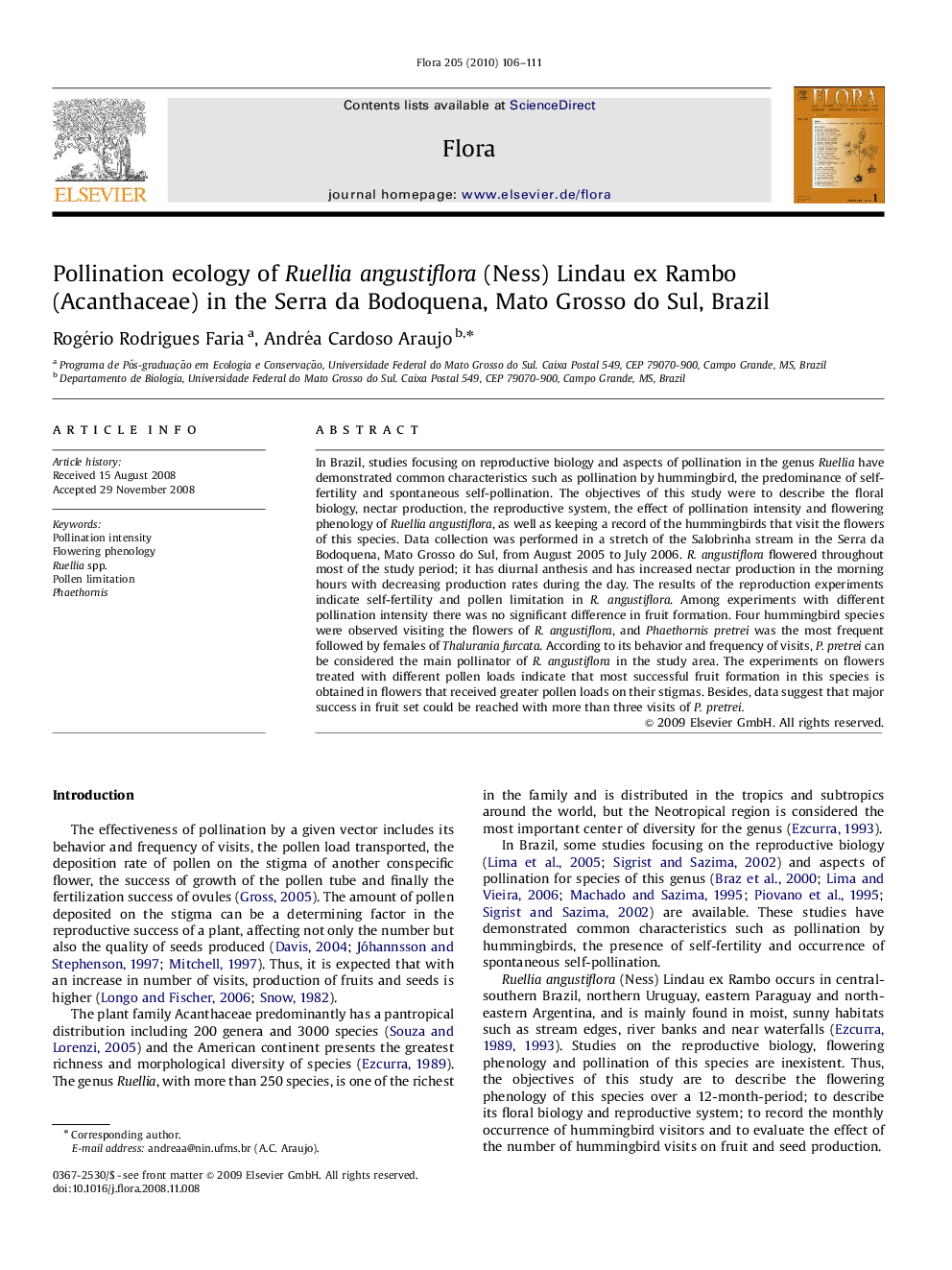| Article ID | Journal | Published Year | Pages | File Type |
|---|---|---|---|---|
| 2180187 | Flora - Morphology, Distribution, Functional Ecology of Plants | 2010 | 6 Pages |
In Brazil, studies focusing on reproductive biology and aspects of pollination in the genus Ruellia have demonstrated common characteristics such as pollination by hummingbird, the predominance of self-fertility and spontaneous self-pollination. The objectives of this study were to describe the floral biology, nectar production, the reproductive system, the effect of pollination intensity and flowering phenology of Ruellia angustiflora, as well as keeping a record of the hummingbirds that visit the flowers of this species. Data collection was performed in a stretch of the Salobrinha stream in the Serra da Bodoquena, Mato Grosso do Sul, from August 2005 to July 2006. R. angustiflora flowered throughout most of the study period; it has diurnal anthesis and has increased nectar production in the morning hours with decreasing production rates during the day. The results of the reproduction experiments indicate self-fertility and pollen limitation in R. angustiflora. Among experiments with different pollination intensity there was no significant difference in fruit formation. Four hummingbird species were observed visiting the flowers of R. angustiflora, and Phaethornis pretrei was the most frequent followed by females of Thalurania furcata. According to its behavior and frequency of visits, P. pretrei can be considered the main pollinator of R. angustiflora in the study area. The experiments on flowers treated with different pollen loads indicate that most successful fruit formation in this species is obtained in flowers that received greater pollen loads on their stigmas. Besides, data suggest that major success in fruit set could be reached with more than three visits of P. pretrei.
